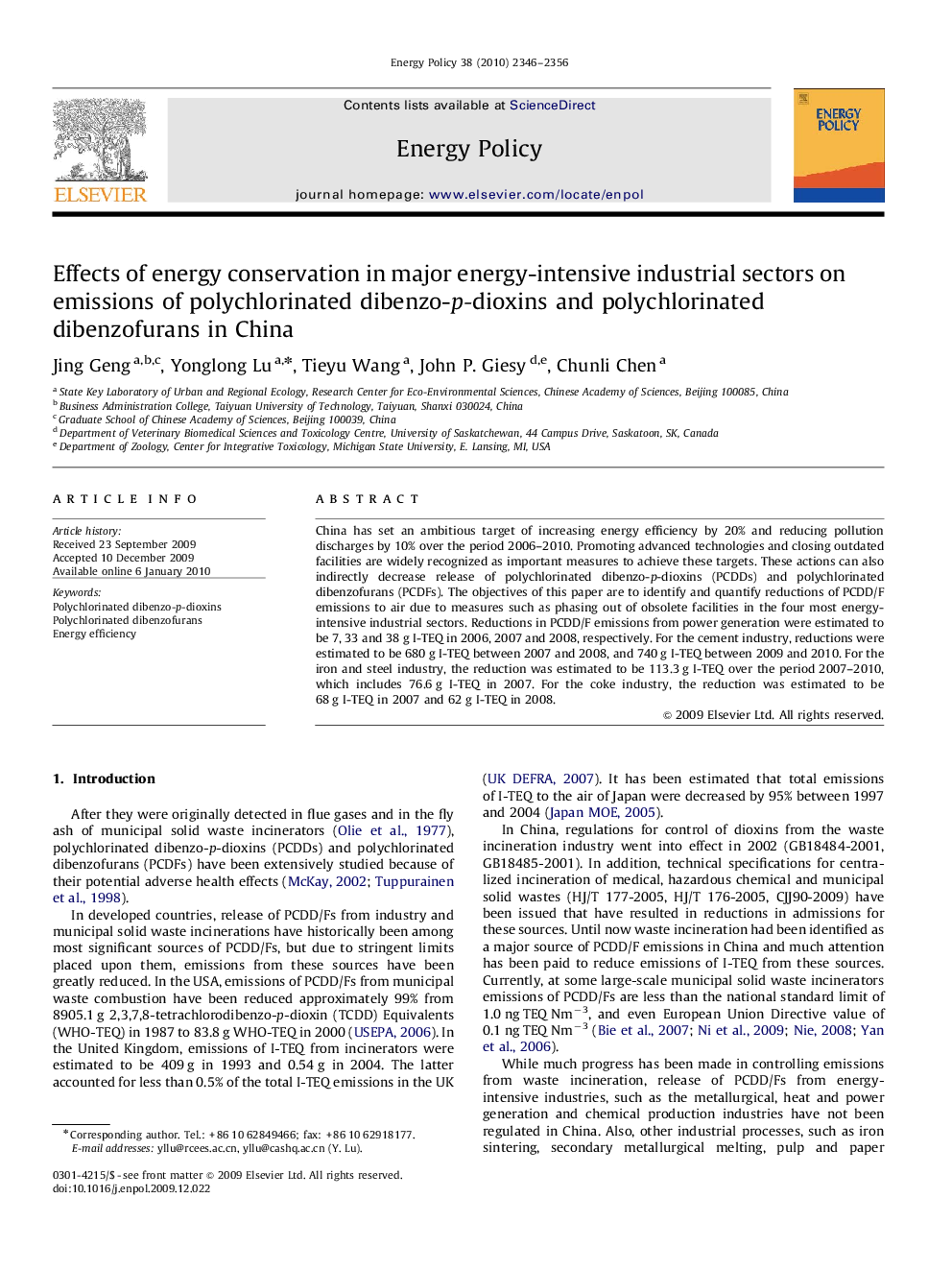| Article ID | Journal | Published Year | Pages | File Type |
|---|---|---|---|---|
| 995032 | Energy Policy | 2010 | 11 Pages |
Abstract
China has set an ambitious target of increasing energy efficiency by 20% and reducing pollution discharges by 10% over the period 2006-2010. Promoting advanced technologies and closing outdated facilities are widely recognized as important measures to achieve these targets. These actions can also indirectly decrease release of polychlorinated dibenzo-p-dioxins (PCDDs) and polychlorinated dibenzofurans (PCDFs). The objectives of this paper are to identify and quantify reductions of PCDD/F emissions to air due to measures such as phasing out of obsolete facilities in the four most energy-intensive industrial sectors. Reductions in PCDD/F emissions from power generation were estimated to be 7, 33 and 38Â g I-TEQ in 2006, 2007 and 2008, respectively. For the cement industry, reductions were estimated to be 680Â g I-TEQ between 2007 and 2008, and 740Â g I-TEQ between 2009 and 2010. For the iron and steel industry, the reduction was estimated to be 113.3Â g I-TEQ over the period 2007-2010, which includes 76.6Â g I-TEQ in 2007. For the coke industry, the reduction was estimated to be 68Â g I-TEQ in 2007 and 62Â g I-TEQ in 2008.
Related Topics
Physical Sciences and Engineering
Energy
Energy Engineering and Power Technology
Authors
Jing Geng, Yonglong Lu, Tieyu Wang, John P. Giesy, Chunli Chen,
